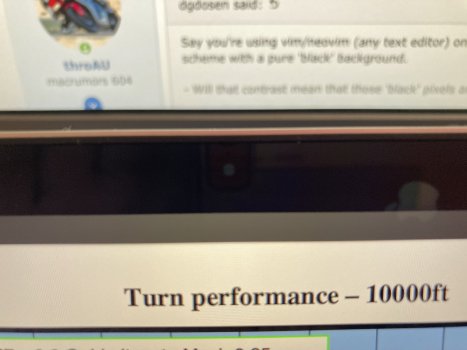Say you're using vim/neovim (any text editor) on an a new Macbook Pro with miniLED display that allows you to set a color scheme with a pure 'black' background.
- Will that contrast mean that those 'black' pixels are completely off?
- Would that high contrast be healthy/unhealthy from an ergonomic perspective?
I'm asking because on an HDR Macbook Pro - I can't distinguish between neovim and the screen bezel when using a color scheme with a black background. If I try that same color scheme on an Macbook Air (without miniLED), I can definitely see the bezel around the screen, as the bezels are a 'blacker black'.
Thanks for any advice.
- Will that contrast mean that those 'black' pixels are completely off?
- Would that high contrast be healthy/unhealthy from an ergonomic perspective?
I'm asking because on an HDR Macbook Pro - I can't distinguish between neovim and the screen bezel when using a color scheme with a black background. If I try that same color scheme on an Macbook Air (without miniLED), I can definitely see the bezel around the screen, as the bezels are a 'blacker black'.
Thanks for any advice.


